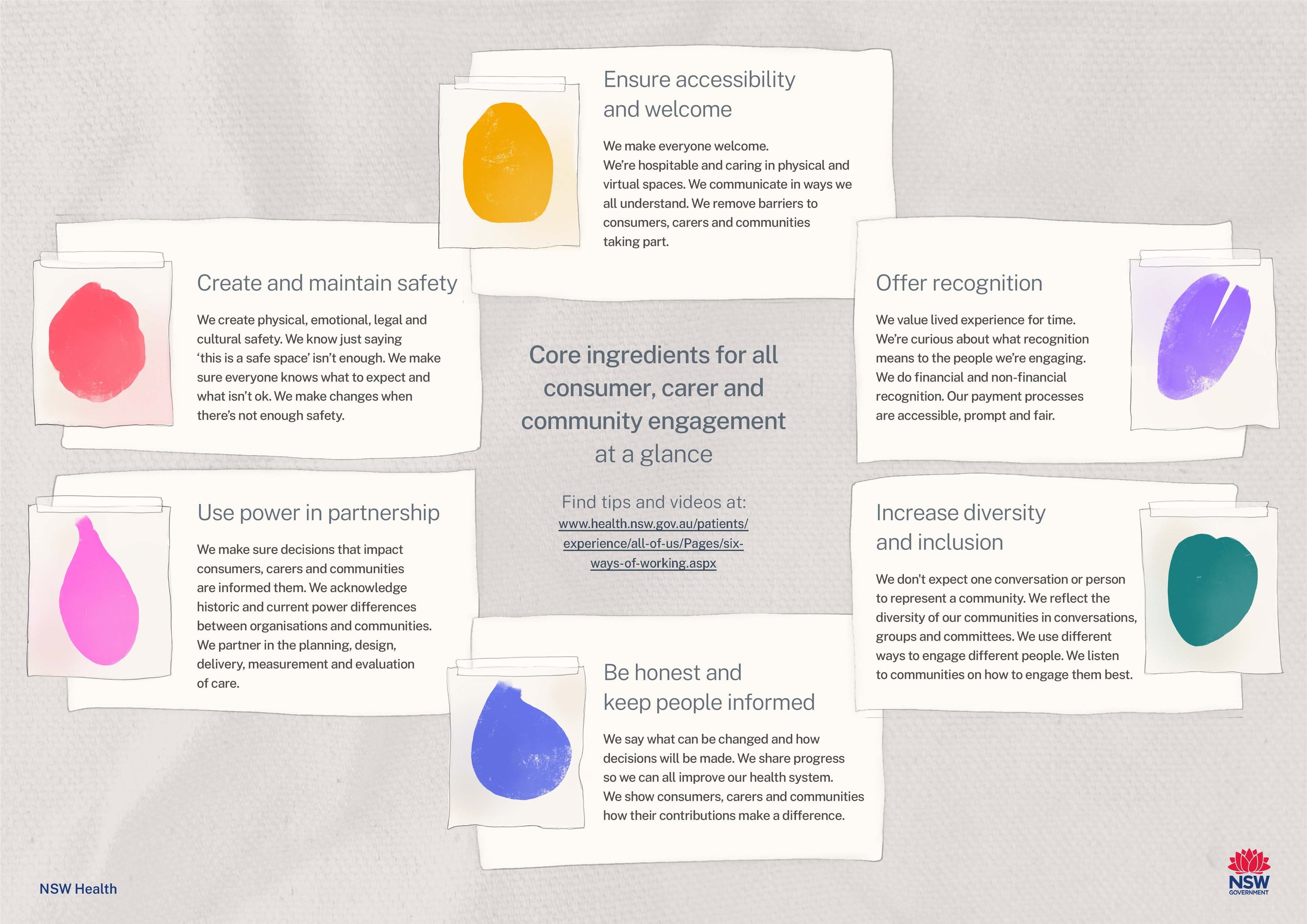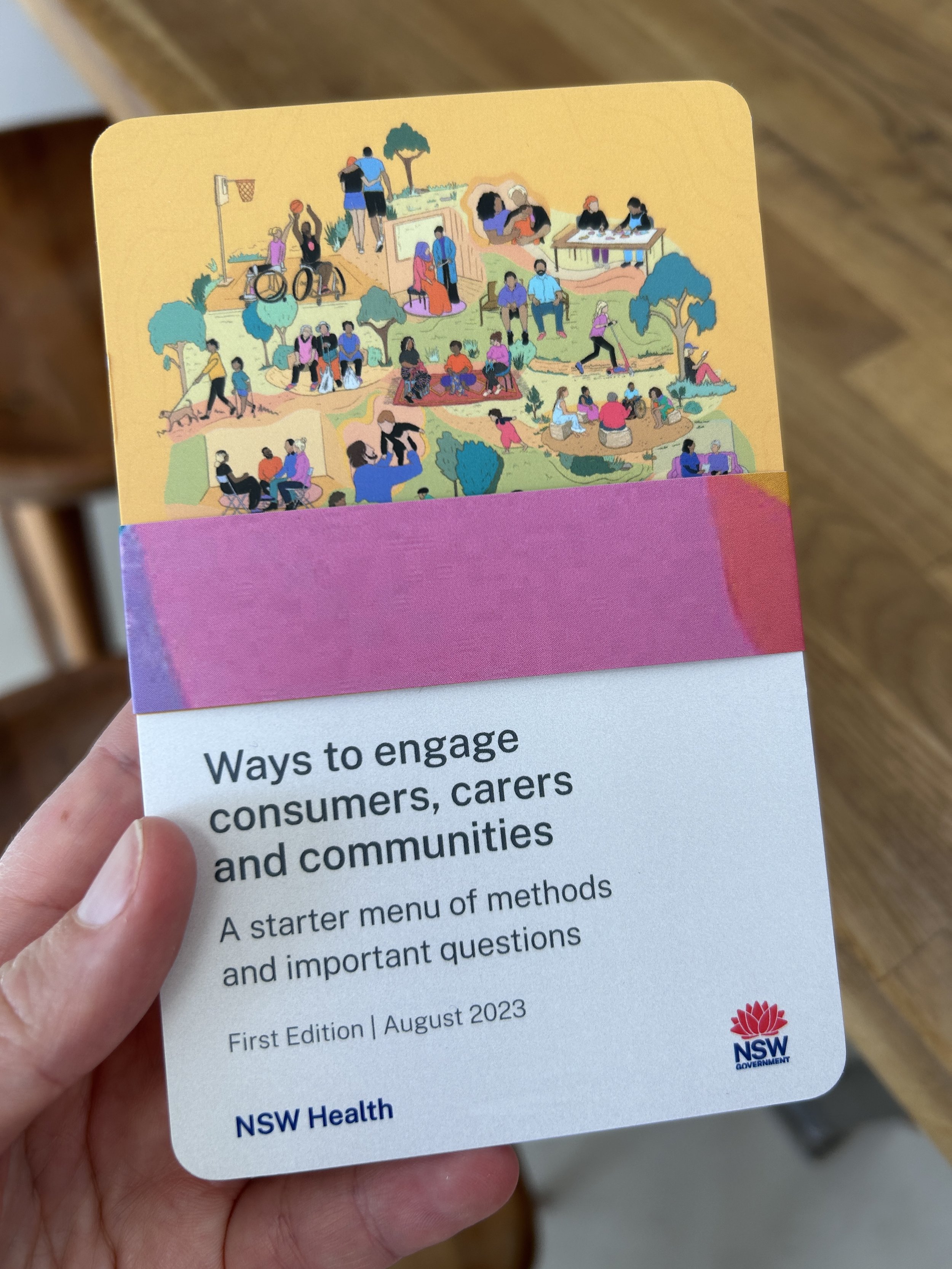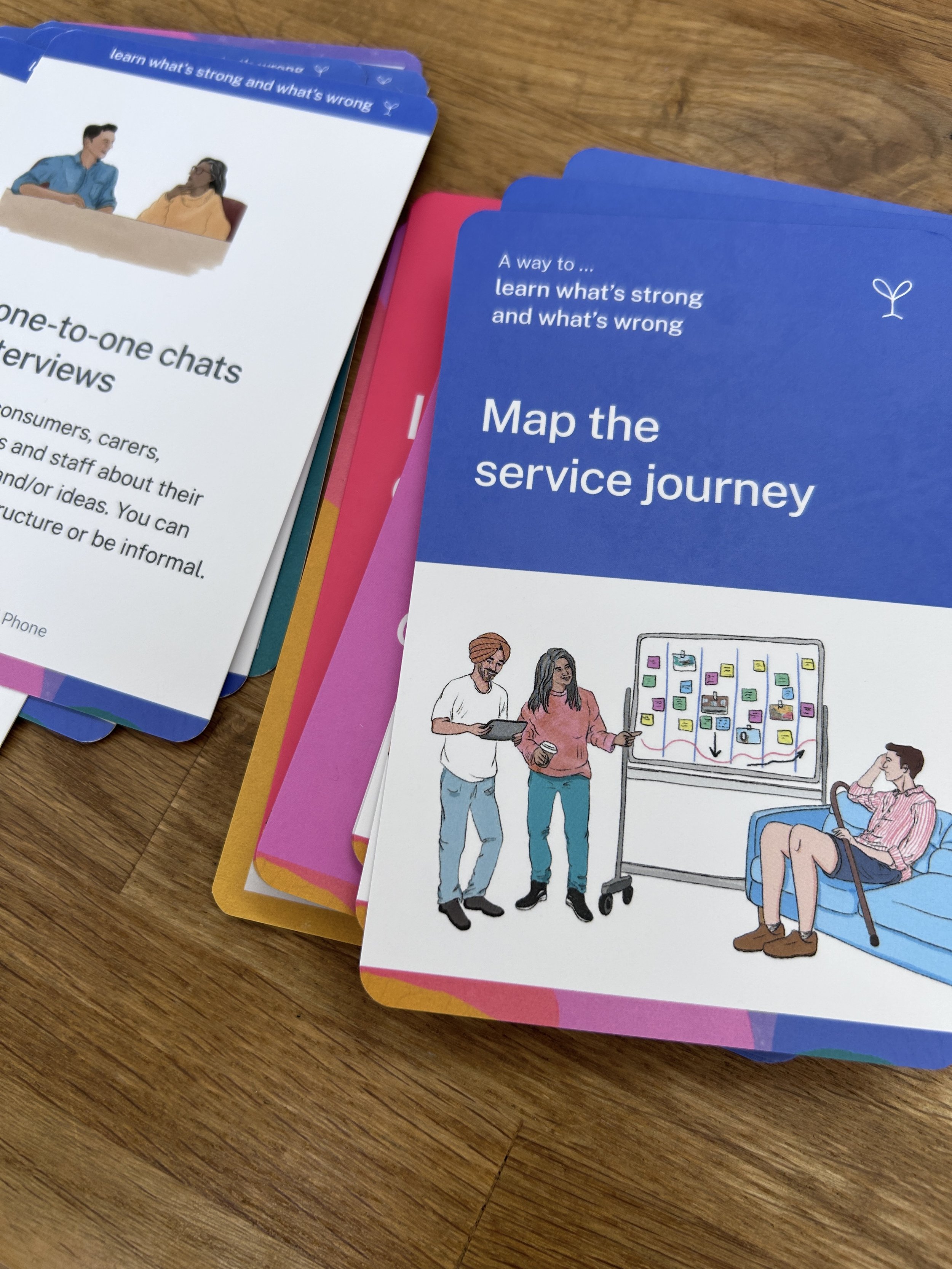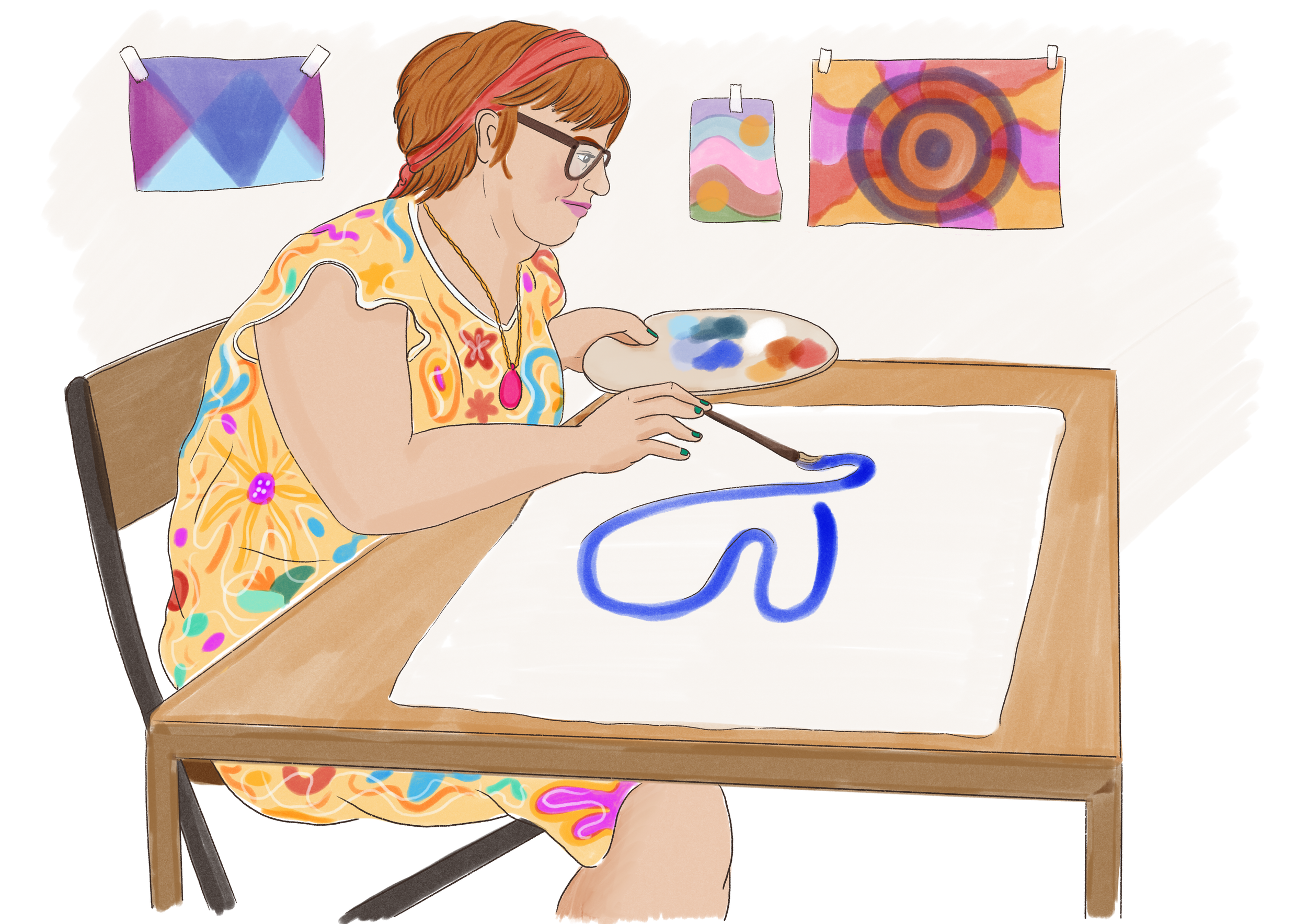
All of Us
Partners: NSW Health, Beyond Sticky Notes, consumers, carers and community members
What is All of Us?
There is growing awareness of the need for health services to engage with the various communities that they serve and live alongside, in order to better understand what’s working and what could be done differently, and to perhaps develop and create new services together in the future. The health system, however, was not exactly created in a way that naturally facilitates this type of engagement. Enter ‘All of US’ – a guide to respectful engagement for NSW Health consumers*, carers, communities and staff.
All of Us was created by health consumers, carers and staff, and ‘provocateurs**’, in a participatory process that incorporated co-design methods and was expertly led by KA McKercher of Beyond Sticky Notes and Sue Muller of Better Together Collective. This guide comprises of an overview (available online and as a printable PDF) and supporting tools (checklists, method cards and templates), describing ‘Six ways of working’ that were identified as being critical for effective and meaningful engagement, and many other practical tips and information for staff wanting to work in partnership with consumers, carers and communities.
*The word ‘consumer’ in place of ‘patient’ (or similar) has been used to varying degrees in the context of health since the 1970s, when a movement of people self-identified as consumers (as opposed to being labelled as such by the health system), because it denotes a person’s sense of choice (and therefore agency) in the treatment they receive. While imperfect, and not used by everyone, the term is often used today, and features throughout this guide. More information about the use of this and other terms in All of Us is available here.
**’Provocateurs’ were people who were not part of the health system, to constructively challenge ideas, provoke conversation and suggest alternative ways of thinking, unhampered (or at least less hampered) by the health frame of reference.
Visual style
Good Point Design (Lucy) was a creative partner in this process. As part of this role, I was involved in a series of workshops, as one of many, seeking to define what the guide should be about, what shape or format it should take, and how it should look and feel.
The visual design was an important component in bringing the guide to life, to encourage people to engage with its content. While the guide was created primarily for use by health staff, it was designed to also be accessible to consumers, carers and community members, so that it could be shared and used together when planning and running collaborative partnerships and projects.
The visual style - through graphic design and illustration - naturally evolved throughout the process of developing the guide, along with the guide’s content and language and of course in alignment with NSW Health’s corporate brand guidelines.
While the initial rough visuals look quite different to the end results, the consistent aim in relation to the visual design was to create something that felt warm, inviting and uplifting, and that alluded to the diversity, vibrancy and idiosyncrasies of our communities. All illustrations were drawn by hand, to bring time and care to each one, and to bring a unique ‘human’ touch into the guide. The graphic design was simple, ensuring it supported the bright illustrations and was still recognisably part of the NSW Health family.
Method cards
One of the tools in the All of Us suite is a set of ‘method cards’, which is a set of cards that explain a number of different methods (that is, practice or process - a way of doing something) related to working together, engagement planning, research, and coming up with and evaluating ideas. There are 27 cards in the set, divided into three main categories:
Learn what’s strong and what’s wrong
Find and make ideas, and,
Try things out
There are also nine Important questions cards in this set, which link to other parts of All of Us and facilitate respectful engagement throughout the lifecycle of a partnership.
The handheld cards present the information in a bite-size format that is accessible and easily shared and discussed with others, making them well-suited to collaboration. Each card features an illustration of an example of that method, and a small amount of text explaining the method - some examples are shared in the slideshow below.





































